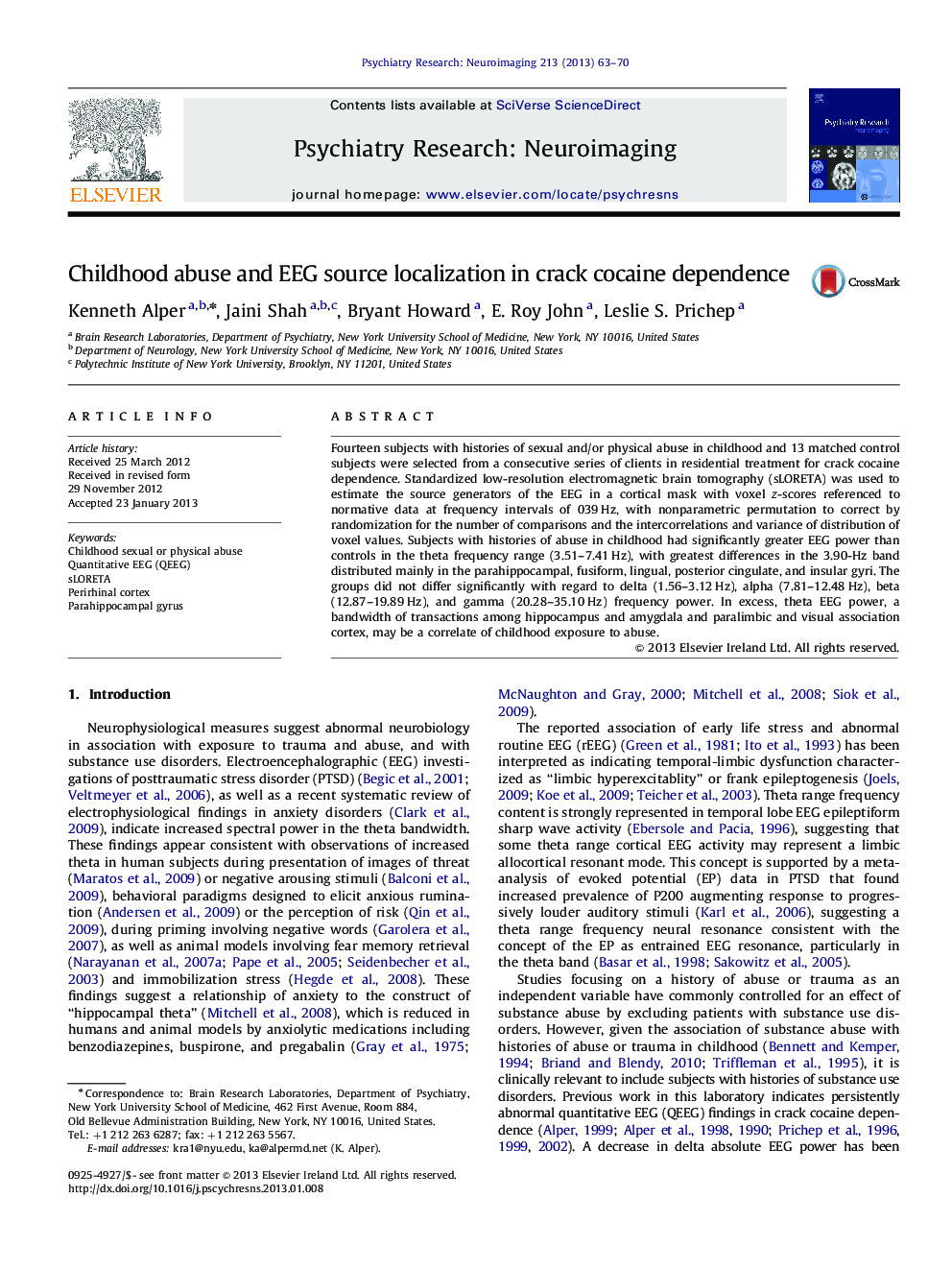| Article ID | Journal | Published Year | Pages | File Type |
|---|---|---|---|---|
| 334995 | Psychiatry Research: Neuroimaging | 2013 | 8 Pages |
Fourteen subjects with histories of sexual and/or physical abuse in childhood and 13 matched control subjects were selected from a consecutive series of clients in residential treatment for crack cocaine dependence. Standardized low-resolution electromagnetic brain tomography (sLORETA) was used to estimate the source generators of the EEG in a cortical mask with voxel z-scores referenced to normative data at frequency intervals of 039 Hz, with nonparametric permutation to correct by randomization for the number of comparisons and the intercorrelations and variance of distribution of voxel values. Subjects with histories of abuse in childhood had significantly greater EEG power than controls in the theta frequency range (3.51–7.41 Hz), with greatest differences in the 3.90-Hz band distributed mainly in the parahippocampal, fusiform, lingual, posterior cingulate, and insular gyri. The groups did not differ significantly with regard to delta (1.56–3.12 Hz), alpha (7.81–12.48 Hz), beta (12.87–19.89 Hz), and gamma (20.28–35.10 Hz) frequency power. In excess, theta EEG power, a bandwidth of transactions among hippocampus and amygdala and paralimbic and visual association cortex, may be a correlate of childhood exposure to abuse.
